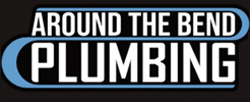Dealing with low water pressure in your home can be a real hassle, disrupting daily activities like showering or washing dishes. Understanding the root causes behind this issue and knowing how to fix it is crucial for maintaining a comfortable living environment.
Occasional Low Water Pressure Problems:
Are you encountering low water pressure sporadically? It might be due to simultaneous usage of multiple water-using appliances or plumbing fixtures in your home. If the problem persists despite reducing usage, it’s time to conduct a thorough inspection and possibly enlist the expertise of local plumbers for a swift resolution.

Common Reasons for Low Water Pressure:
- Water Supplier Maintenance: Sometimes, low water pressure can stem from maintenance work by your local water supplier. Before panicking, check with neighbours or contact the supplier to ascertain if the issue is temporary.
- Faulty Pressure Regulator: A malfunctioning pressure regulator can disrupt water pressure, necessitating adjustments or replacement to restore normal flow rates. If you notice sudden changes in pressure across all fixtures, this could be the culprit.
- Partially Closed Shutoff Valves: Ensure that both the main water shutoff valve and the meter valve are fully open. Partial closure can impede water flow, leading to reduced pressure throughout your home. These valves are often overlooked but can be easily checked and adjusted.
- Clogged Pipes and Fixtures: Over time, mineral deposits, rust, or debris can accumulate in water pipes and fixtures, obstructing flow and causing low water pressure. This is particularly common in older homes or areas with hard water. Regular maintenance and cleaning can help prevent this issue.
- Corroded Pipes: Ageing pipes, particularly galvanised steel or copper ones, are prone to corrosion, impacting water pressure. If your home is more than 20 years old, consider having a professional plumber inspect your pipes for signs of corrosion.
- Leaking Taps & Pipes: Water leaks can significantly diminish water pressure while also posing risks of water damage and mould growth. Even small leaks can have a big impact, so it’s important to address them promptly.
Additional Factors Impacting Low Water Pressure:
Beyond these common causes, several other factors can influence water pressure, including:
- Property elevation
- Condition of service pipes
- Shared supply pipes
- Peak demand conditions
- Internal plumbing configurations
How To Fix Low Water Pressure
When you’re faced with low water pressure, there are several steps you can take to diagnose and potentially resolve the issue before calling in the professionals. Here’s a detailed guide on what you can do:
- Check Your Internal Stop Tap
The first step in addressing low water pressure is to locate your internal stop tap, also known as the main shutoff valve. This is typically found under the kitchen sink or where the main water line enters your home. Ensure it’s fully open by turning it anticlockwise as far as it will go. Sometimes, this valve can be accidentally partially closed during home maintenance or renovations, leading to reduced water pressure throughout the house. - Inspect for Visible Leaks
Next, conduct a thorough inspection of your visible piping. Check under sinks, behind toilets, and in your basement or crawl space if you have one. Look for any signs of water leakage, such as damp spots, puddles, or water stains. Even small leaks can significantly impact your water pressure and, if left unaddressed, can lead to more serious water damage and mould growth. - Examine Your External Stop Tap
If it’s safe and accessible, check your external stop tap. This is usually located near the boundary of your property, often under a small cover in the footpath or front garden. Like the internal tap, ensure it’s fully open. However, be cautious when adjusting this tap, as it’s typically the responsibility of your water supplier. If you’re unsure, it’s best to contact them or a professional plumber.
Clean Aerators and Showerheads
Over time, mineral deposits can build up in your taps’ aerators and showerheads, restricting water flow. To clean these:
- Unscrew the aerator or showerhead.
- Soak it in a mixture of equal parts white vinegar and water for several hours.
- Scrub gently with an old toothbrush to remove any remaining deposits.
- Rinse thoroughly and reattach.
This simple maintenance task can often restore water pressure in individual fixtures.
Consider a Water Pressure Booster System
If you’ve tried all the above steps and still experience low water pressure throughout your home, you might want to consider installing a water pressure booster system. These systems use an electric pump to increase the pressure of water as it enters your home. While effective, installing a booster system is a job best left to professional plumbers to ensure it’s correctly sized and installed for your home’s specific needs.
Remember, while these DIY steps can often resolve minor pressure issues, persistent or severe low water pressure problems may indicate more serious underlying issues. In such cases, it’s best to call in the experts at Around The Bend Plumbing.
When to Call a Professional:
If you’ve tried these steps and still experience low water pressure, it’s time to call in the experts. At Around The Bend Plumbing, we have over 20 years of experience dealing with all types of plumbing issues, including low water pressure. Contact Around The Bend Plumbing on 0433 562 246. We’re available 24/7 for all your plumbing emergencies, ensuring you always have access to the water pressure you need.
